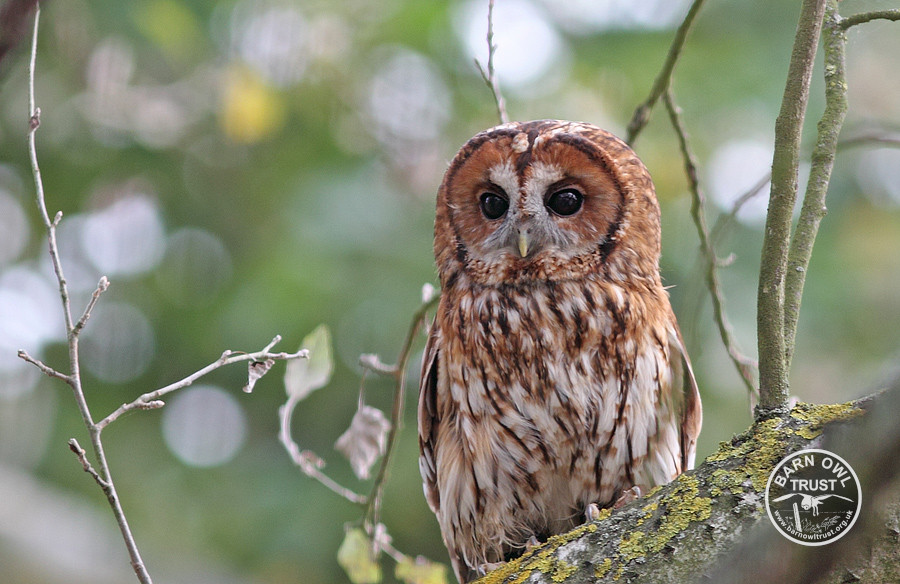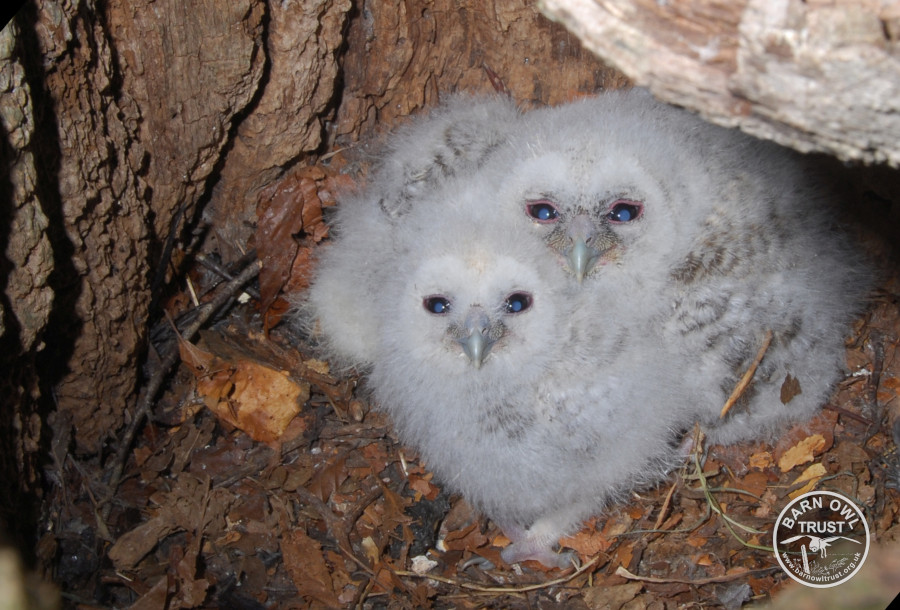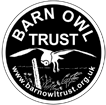Tawny Owl facts
including ecology, distribution and conservation
Ecology
Tawny Owls (Strix aluco) are a resident, sedentary and highly territorial breeding species in the UK. They are responsible for the most commonly heard owl sound, the classic, nocturnal ‘twit twoo’ call, which most people are familiar with.
Young Tawnies typically establish a territory by late autumn which they defend, and are most unlikely to leave, for the rest of their lives. Nocturnal vocalisations are common throughout the year but particularly in autumn, late winter / early spring, with very occasional calls in broad daylight.
The size of the territory ranges between 12 and 20 hectares (30 to 50 acres) depending on the amount of suitable habitat available. Typical lifespan is 4 years with breeding in the 2nd calendar year. Females are generally bigger and heavier than males.
Diet comprises predominantly small mammals, namely Wood Mice (Apodemus sylvaticus) and Bank Voles (Myodes glareolus), but can also include Field Voles (Microtus agrestis) if areas of prey-rich grassland are available within the territory. In addition they will take rabbits, moles, small birds, beetles, earthworms, frogs and even fish. They have been recorded eating carrion in times of hardship.


Habitat
Tawny Owls are primarily a woodland species, but have adapted to live almost anywhere there are trees, including city parks, wooded urban and suburban gardens, farmland hedgerows and copses, as well as more extensive areas of woodland and forestry. The densest populations are found in deciduous, broad-leaved woodland, but they can also be found in coniferous forest and scrub habitats across both pastoral and arable landscapes.
Nesting
Tawny Owls will nest in a variety of places, but prefer tree cavities where available. However, in the absence of a suitable cavity they will use other natural sites including old crow or pigeon nests, squirrel drays, the forks of tree trunks, and even rabbit holes. They take readily to artificial sites such as purpose-built nestboxes. However, it’s highly unusual to find Tawny Owls roosting in a building and even rarer to find them nesting in one.
Only one clutch of eggs is laid, usually in the late winter or early spring. Tawny Owls are very early nesters with an average first egg date of 23rd March in the UK, although they can lay several weeks earlier than this if conditions are favourable, or later. Hatching early June has been recorded. Clutch size is typically 2-3 eggs, laid asynchronously every 2 days or so, and incubation lasts for approximately 30 days. Fledging occurs around 5 weeks of age, although young Tawny Owls tend to leave the nest earlier than this during their ‘branching’ phase. Still dependent on their parents for food for up to 3 months after leaving the nest, they will sit around on the branches of nearby trees and beg for food once darkness falls. If you find a young owl on the ground it’s important to identify it as what you need to do will differ depending on the species. If it’s a young Tawny Owl, then it probably isn’t in trouble and doesn’t need rescuing. If it’s a young Barn Owl the advice is completely different and it almost certainly does need rescuing and putting back in its nest.
A word of caution if approaching a Tawny Owl nest or handling nearby young: the parents can be highly protective of their offspring – so head, face, and neck protection is recommended.



UK population
Tawnies are by far the most common owl species in the UK, with an estimated population of 50,000 pairs (2005). Nevertheless, they are amber-listed as a Species of Conservation Concern in the UK as a result of a probable decline (Eaton et al, 2015) later highlighted by the BTO Tawny Owl Point Survey 2018.
Distribution
Widely distributed across much of Great Britain, they are absent only from islands (Isle of Man, Channel Islands, Northern and Western Isles, Scillies etc.), and uplands where there are few or no trees. As might be expected from a species unwilling or unable to undertake short sea crossings, they are entirely absent from Ireland.
Conservation
The reasons for the declines in breeding and winter populations and ranges are poorly understood. Changes in woodland management, increasing urbanisation and/or the influence of climate change on small mammal abundance could be factors, but more research is required. However, the following conservation measures could be of some help, not just for Tawny Owls but for a number of other species as well:
- Manage existing woodland carefully with a focus on preserving tree age and species diversity. Mature trees should be nurtured and maintained. Standing dead wood should be left where safe to do so.
- Allow ‘Standard’ trees to mature within hedgerows. One deciduous tree every 30 to 50 metres should be allowed to grow and mature in managed hedgerows by avoiding them when flailing or laying.
- Create new deciduous, broad-leaved plantations adjacent to existing woodlands. These will be beneficial in the short-term when prey-rich rough grassland habitat initially develops between the trees, and in the long-term once mature.
- Create new in-field ponds, particularly where adjacent to existing woodland to encourage amphibians, invertebrates and small birds.
- Erect Tawny Owl boxes in areas where there is a shortage of very mature trees.

